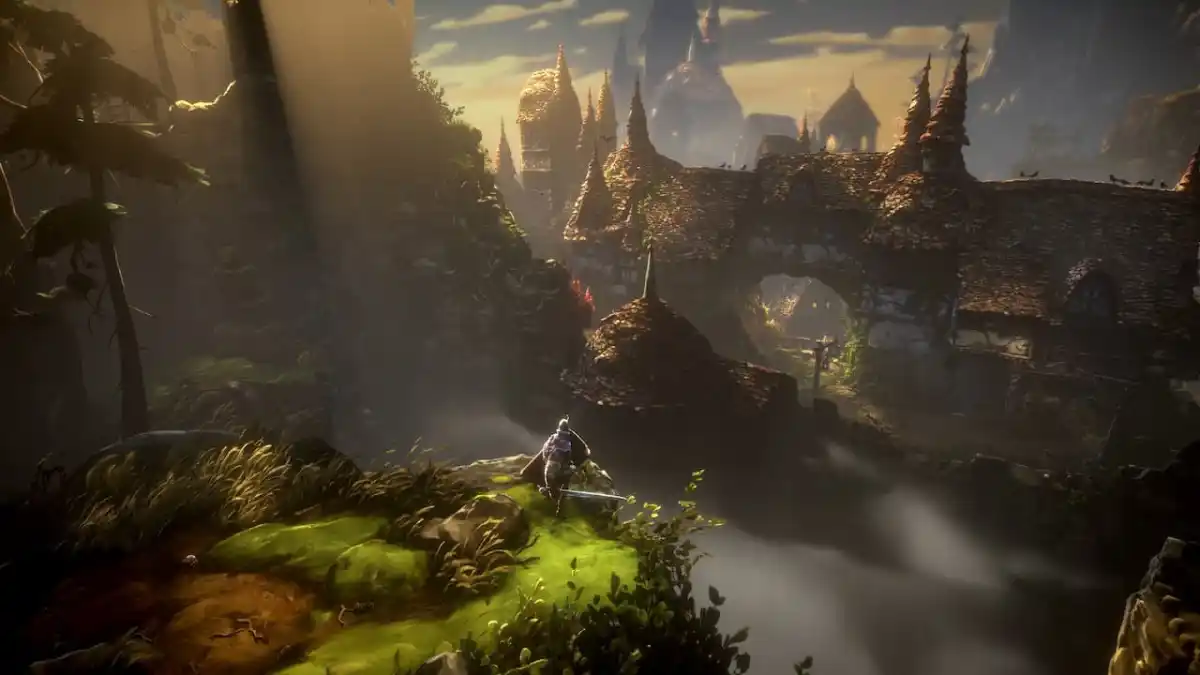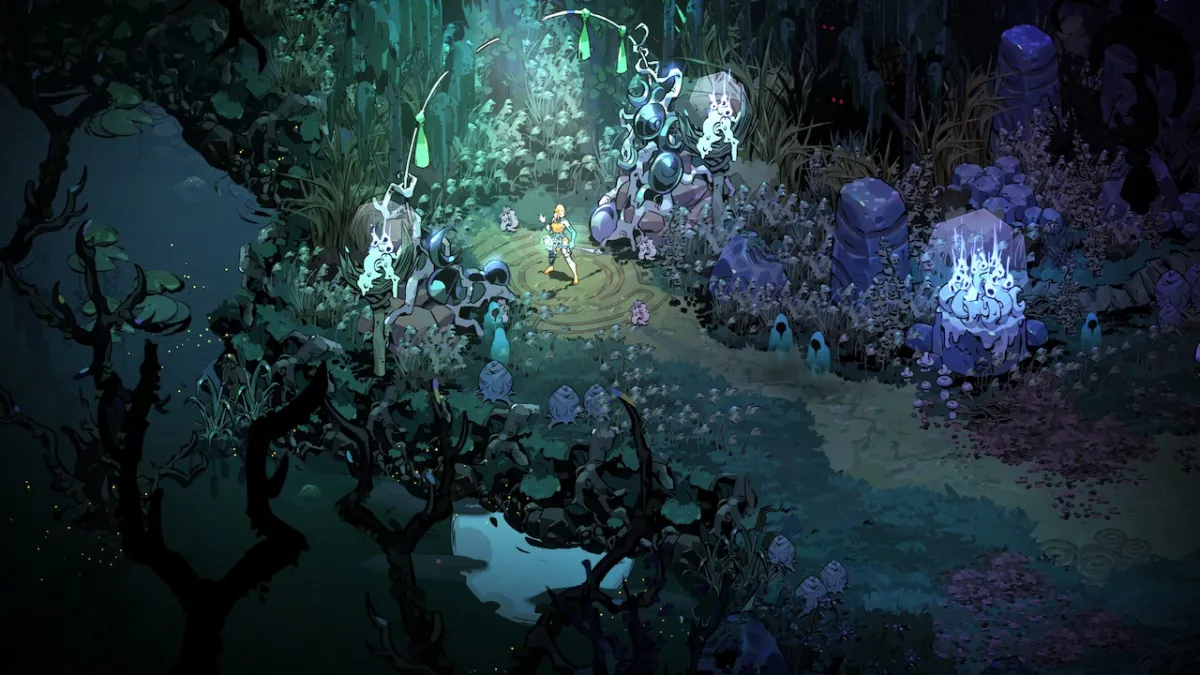Picture Red Faction’s wall-busting GeoMod technology as re-imagined by TV gardener Alan Titchmarsh while he’s shooting Haze rejects with spud guns, and you’ll get not only a flavour of Fracture’s one and only innovation, but also an indication of where the game ultimately falls down. Raising and lowering terrain on the fly, using the nattily-named “Entrencher” to provide man-made cover and solve rudimentary puzzles, is the big idea in LucasArts’ third-person shooter, and it’s an interesting quirk to complement the overly familiar action, at least to begin with.
Plot-wise we’re in the 22nd century, where climate change has caused untold environmental disaster and split the United States into two separate factions: the Atlantic Alliance (yay, goodies) and the Republic of Pacifica (boo hiss, baddies). With slick but inconsequential cutscenes, and passable but unremarkable voice acting, it’s storytelling by numbers. In short: go to various places and shoot lots of people for reasons that don’t really matter. Rinse and repeat.
You play the tragically named Jet Brody, with facial scars presumably picked up in the school playground of hard knocks, and armour stolen from a Too Human/Mass Effect cosplay convention. Focus-grouped to oblivion, and changed in both name and character design since the game was first announced, the hero comes across as the most uncharismatic lead videogame character in recent memory. But I’m sure his mum still loves him.
The unwillingness of LucasArts to dare to do anything truly different with Fracture doesn’t stop with the game’s setup. While graphically smooth and competent, with few framerate issues, it’s once again time to infiltrate yawnsome underground facilities, with warehouse sections, and enemies standing next to barrels and rickety structures that explode or fall down if they’re so much as sneezed on. The muted colour palette, full of muddy greys, greens and browns with a bit of industrial sheen thrown in, doesn’t inspire confidence, and even the outdoor sections lack design inspiration. Levels come and go without being named, and this omission alone makes the game seem like more of a slog than a structured campaign.
Since the Entrencher gun doesn’t affect anything but earth, the surface is necessarily integrated rather clumsily into the indoor levels, and that’s not the only design curio. In a move that forces you to use the terrain deformation feature, there’s no proper cover system, despite the overwhelming prevalence of crates and boxes lying around, and the game is absolutely crying out for that one staple it hasn’t thieved from elsewhere. What this means in practice is that when you’re down to the last vestiges of your “Halo there, we’ve nicked this too” recharging shield, you end up spamming the controller’s bumper buttons in order to try to raise or lower some earth to get you out of the line of fire. It’s imprecise, haphazard, and more than a little bit rubbish.
If as much effort had been put into the unfulfilling combat as the tech behind the Entrencher, one of the game’s major problems would have been eliminated. The overly familiar, AI-bereft enemies barely react to getting shot until they’re dead, the guns are generally weedy, and ammo is often scarce enough to make you wonder whether the British Army is in charge of procurement. On many occasions you’ll die and get sent back to a nearby checkpoint where you’ve got tens of enemies to kill but only harsh language to use against them, and the rocket-equipped jetpack troops and burrowing enemies are astoundingly cheap. These difficulty spikes are passable, but only by hiding away for long periods while engaging in a tedious war of attrition.
The hand-holding in the puzzle sections also irritates. Take the myriad places where you have to lower or raise a particular section of terrain in a certain way to get to an object or activate a piece of machinery, for example. Your arsenal includes various ground-affecting grenades which often form the required solution, but instead of being left to work this out yourself, you’re told exactly what to do over the radio by your Commanding Officer, and confronted by a big icon indicating exactly which type of grenade you need and where to throw it. When you combine these subtle hints with the fact that you’ll usually be confronted by a dead end that just happens to have one very suspicious patch of earth and an infinite crate of grenades next to it (“Oh, I wonder what I have to do here?”), Portal isn’t exactly quaking in its boots.
Fracture isn’t all bad, however. The Vortex grenade, which sucks in surrounding enemies and matter like a particularly aggressive plughole, certainly looks spectacular. Also, if you take it upon yourself to liven up a firefight with some kamikaze usage of rockets, Subsonic grenades, and liberal use of the Entrencher, you can manage to manufacture yourself the exciting pyrotechnic moments that were doubtless in the minds of the developers when they first conceived of the game. Setpieces such as the Dreadnought fights (Halo 3’s Scarab: consult your lawyers) try hard too, but the problem with these and the rest of the game is that there are better examples available from all goAilers. The ldss ihere arh bltte said about the vehicle sections, the better.
The online modes are perfunctory, save for the intriguing Excavation gametype – a territories-based team affair where you capture and hold an area by erecting and then protecting a spike. Unfortunately, the servers are already as empty as Paul Danan’s head, and it’s not hard to see why, given that it’s hard to rouse yourself for something that has the same combat issues as the single player campaign.
In videogames college, Fracture copied the other kids’ homework and rewrote a few bits to try to get away with it. Unfortunately the generic settings and enemies, combined with the average gunplay and unsatisfying puzzle elements, make the game a patchy, uninspiring release that badly needed to get the fundamentals right before adding the flashy tech on top. The terrain deformation never quite manages to transcend its status of gimmick, due to a lack of imagination in the situations that require its use. Ultimately, this leaves Fracture sinking, entrenched in the mediocrity that characterises the game as a whole.


